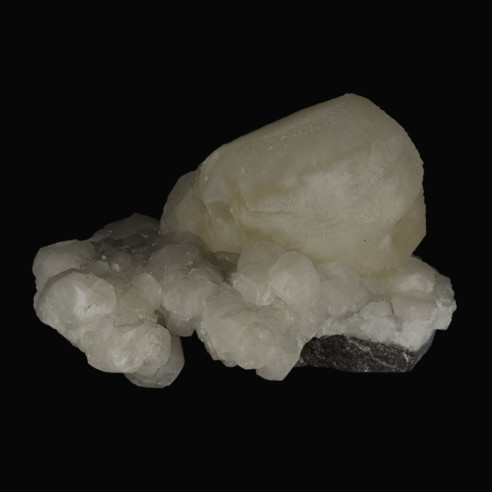Calcite from the Trêves mine in Gard, France (old collection).
Stone dimensions: L: 4.33 inches x W: 3.35 inches x H: 2.68 inches (L: 110mm x W: 85mm x H: 68mm).
Weight: 22.43 oz (636g).
Calcite is a mineral composed of calcium carbonate CaCO3.
On the Mohs scale, calcite has a hardness of 3, which means that it can be scratched by a steel knife but not by a fingernail.
One of the most distinctive ways of identifying calcite is its effervescent reaction to dilute hydrochloric acid (HCl), even when cold. Calcite dissolves in the acid and produces bubbles of carbon dioxide (CO₂).
The Trêves mine was a coal mine located in the Gard department, in the south of France. It was exploited from 1837 until its closure in 1956.
The history of the Trêves mine goes back to the beginning of the 19th century, when coal deposits were discovered in the region. It was the Société des Charbonnages du Gard that created the mine in 1837 and developed its mining operations in the region.
Production increased in the years following the creation of the mine, reaching its peak in the 1920s. At that time, the mine employed several hundred miners and produced nearly 50,000 tons of coal per year.
However, its production began to decline in the 1930s due to competition from cheaper foreign coal. During World War II, the mine was occupied by German forces, who used forced labor to maintain coal production.
After the war, the mine was nationalized and placed under the control of Charbonnages de France, which continued to operate the mine for several decades. However, production continued to decline and the mine was finally closed in 1956.
Since then, the site of the Trêves mine has been preserved as a witness to the industrial heritage of the region. The mine buildings are still visible today, although most are in poor condition. Restoration projects have been considered several times over the years, but none have yet been implemented.














